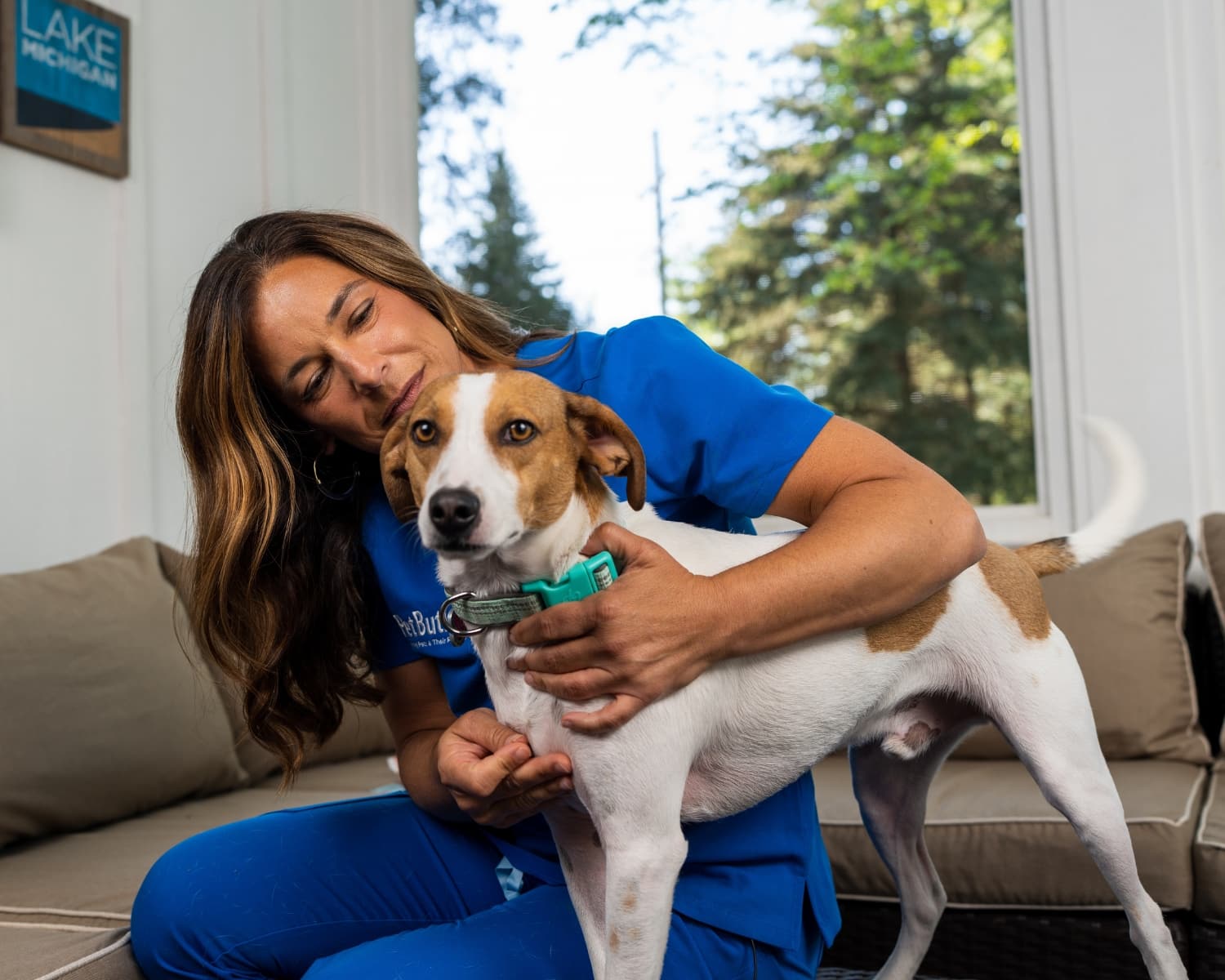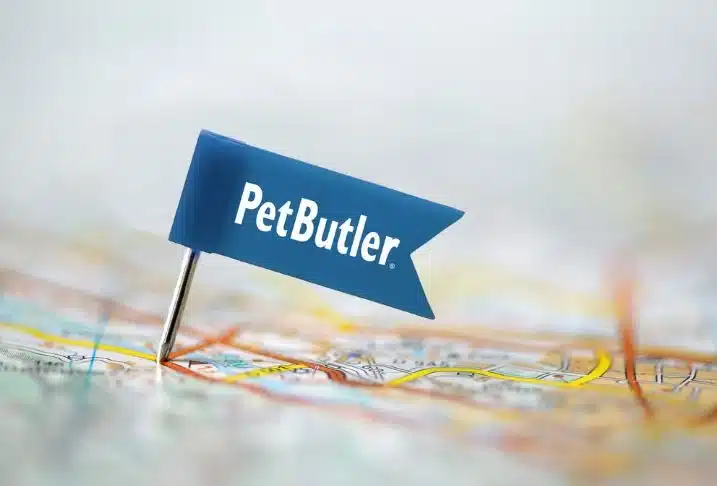Why It’s Good to Keep Tabs on Your Furry Friend’s Health
Proper diet, exercise, grooming, vaccinations, and preventative care are essential to helping our pets live their best lives. It takes a village to raise a healthy pet; your veterinary team, groomer, trainer, dog walker, and pet sitter are all integral parts of managing and maintaining your best friend’s physical and mental well-being. But who keeps an eye on the front line? You do! And as the person who monitors your pet’s daily habits and appearance, the pet parent will be the first to spot signs they aren’t feeling well. Even a first-time pet owner can quickly assess these health parameters. By noticing any deviation in your pet’s “normal,” you can seek medical attention and resolve problems quickly.
First Things First: Checking Your Dog’s Mood and Body Condition
Initial assessment of your pet begins upon approach. A healthy pet is alert, shoulders relaxed, tail wagging, weight evenly distributed or even in a bow, and ready to engage in play or other activities. Though shape among breeds differs, pets of an ideal weight and body condition will have a slight tuck upwards of their abdomen and, from above, an hourglass shape. You should be able to feel, but not see, their ribs. Diet and exercise play a significant role in maintaining an ideal weight which is critical for managing the onset of problems such as respiratory and orthopedic disease. A change in weight that isn’t intentional should be cause for concern and discussed with your veterinarian.
From Head to Paws: Examining Their Body
Once you’ve evaluated their body condition and attitude, you can do a nose-to-tail check on other body systems. A wet nose doesn’t indicate hydration status or health, but discharge from the nose or eyes can indicate disease. The nose can be black, pigmented, light pink, or have spots. But any changes in appearance, color, crusting, or swelling are abnormal. Eyes should be clear, track movement, not be sunken or dull, and have no discoloration of the eye or surrounding tissues. That thin triangular piece of pink skin in the corner of your dog’s eye? Normal and healthy! The third eyelid provides additional protection and distributes tear film.
Dogs with healthy ears will have no odor, redness, swelling, discharge, or touch sensitivity. You may expect a small amount of yellow to tan wax, but your pet should exhibit no other symptoms of infection or illness. Head shaking, whining, or obvious growths in or on the ear canal should prompt a visit to the veterinarian. Allergies or unaddressed trauma usually cause ear infections. Handle your pet’s healthy ears often and introduce them to cleansing solutions and gentle inspection. They will be more agreeable to future examinations and treatment if and when that time should come.
Making Sure Those Chompers are in Good Shape
What’s not to love about puppy breath? For most dogs, that sweet smell disappears by 3-6 months when their adult teeth replace their baby teeth. But that doesn’t mean you should stop opening your pet’s mouth to evaluate teeth, gums, and odor! Gently rub your dog’s cheek, raise their lips, and open them wide. Gum color in dogs is variable; some are more highly pigmented than others. That’s why it’s best to do regular home checks to detect changes in your pet’s appearance. Moist, pink gums, tongue, and fresh breath are signs of good health. Foul odor, pale, dry gums, heavy tartar, missing teeth, bleeding, or oral masses are not. Maintain oral hygiene with daily brushing, rinses, and even treats or specially formulated kibble. Because oral health affects the heart, kidneys, and other body systems, staying on top of home care and performing regular checks is critical.
Checking Your Pet’s Tummy
As you slide your hands past your dog’s head and shoulders, there shouldn’t be resistance from a bit of pressure on the belly. A regular appetite and daily bowel movements are indicators of good health. The stool should be brown and firm but not hard, absent of blood or mucous, and easy to pick up. Regular eating habits amongst dogs can differ wildly; some prefer moist to dry food, some eat once daily, while others are grazers or need an audience. Tell your vet about unexpected changes in your pet’s appetite, food preference, stool consistency, color, and frequency. Stress, parasites, pancreatitis, and other mild to severe diseases can affect your pet’s gastrointestinal system.
Inspecting Under the Tail
Even healthy dogs don’t generally like to be inspected under the tail. But check, you must! Signs your pet is healthy include a lack of odor or discharge from around your pet’s genito-urinary tract, no signs of excessive licking such as hair loss or wetness, and the ability to urinate a good stream of light yellow, clear urine several times daily (preferably outside, on command) without obvious pain or strain. Healthy dogs with ample clean, fresh water should have no problems eliminating routinely 3-5x a day. Issues within the urinary tract can escalate quickly; if you notice your pet’s voiding routine has changed, call your vet immediately.
Feeling for Lumps, Bumps, and Parasites
Reward your pet’s cooperation during their at-home exam with lots of kisses and snuggles. Rub your hands through their fur and feel for any lumps or bumps. Notice the texture and thickness of their coat, and be aware of any sensitive or itchy spots, dandruff, or redness. Like the gums and nose, their skin may normally be darkly pigmented, spotted, or all pink. All coats should be free of mats, smells, scales, and oil. As a grand finale, check for parasites. Ticks lurk on the ears, under the armpits, and even between the toes. Fleas may only leave tell-tale “dirt” behind, or you may be able to spot the fast-moving buggers. While skin disease isn’t usually a medical emergency, checking in with the pros should your dog not pass a cursory exam with flying colors is always best.
Expert Vet Advice
At Pet Butler, we want you and your pet to live your best and healthiest lives, which is why we offer pet waste removal and other services year-round. We offer weekly, bi-weekly, monthly and one-time clean-up services to work with your schedule and needs.

